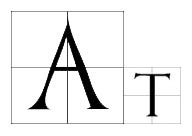Member-only story
How a Legendary Terror of the Ocean Came to be Understood by Science
Rogue Waves
 At 3:10am on 12 December 1978 two cargo ships and a French coastal radio station at Bordeaux-Arcachon picked up a garbled distress call from the German freighter MS München, then just north of the Azores in the North Atlantic.
At 3:10am on 12 December 1978 two cargo ships and a French coastal radio station at Bordeaux-Arcachon picked up a garbled distress call from the German freighter MS München, then just north of the Azores in the North Atlantic.
On one hand, it was unsurprising that a ship should be in trouble. A massive storm front was sweeping across the ocean from Newfoundland to the Bay of Biscay, with 150 kilometre-per-hour (94 mph) winds and 15-metre (50 ft) waves. It seemed impossible, though, that the ship in distress could be the München. She was a modern freighter, built in Belgium only six years previously and fitted with all the latest electronic navigation and safety equipment. She was a behemoth, 261 metres (856 ft) long, 32 metres (105 ft) wide, powered by a massive 26,000 horsepower engine, and designed to withstand the worst that the sea could throw at a ship. She had made sixty-one crossings of the North Atlantic in all seasons with good speed and without incident, and was then in her sixty-second. She was operated by Hapag-Lloyd, a reputable and professional shipping company, and manned by an experienced crew of twenty-eight. Nonetheless, the French radio operators couldn’t reach her. At 6:00am, they put a call through to the headquarters of Hapag-Lloyd in Hamburg to report that the…